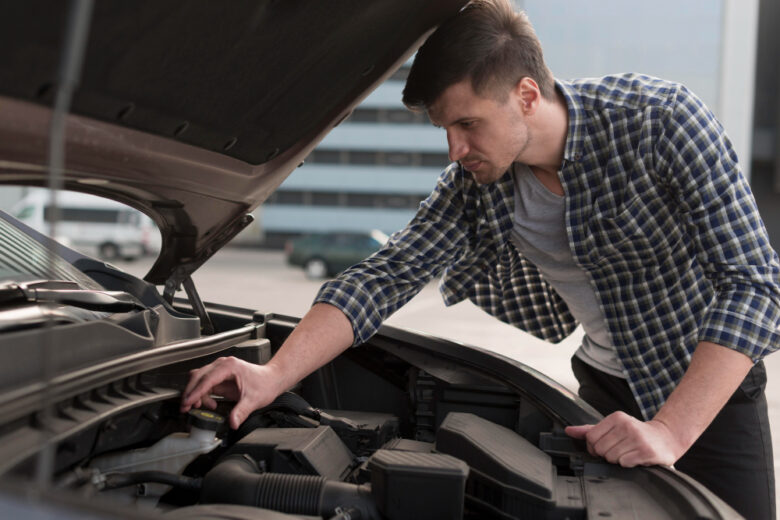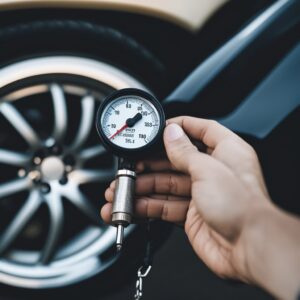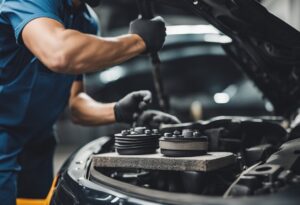Are you tired of constantly taking your car to the mechanic for every little problem? Learning how to troubleshoot common car issues yourself can save you time and money. Not only that, it can also give you a sense of pride and accomplishment knowing that you were able to fix your own vehicle. Many car problems can be easily diagnosed and fixed by following a few simple steps. And today, we will guide you through some of the most common car problems and how to troubleshoot them yourself.
Checking the Basic Components
It’s important to make sure that your basic components are in good working condition. This includes checking the battery, spark plugs, and air filter. A dead or weak battery can cause various electrical issues in your car. To check the battery, simply turn on your headlights and see if they appear bright. If they are dim or not turning on at all, it’s likely that your battery needs to be replaced.
Next, check your spark plugs. These are responsible for igniting the fuel in your engine. If they are dirty or worn out, it can cause misfires and other engine issues. To check the spark plugs, remove them using a socket wrench and inspect them for any signs of wear or dirt buildup.
Lastly, don’t forget to check your air filter. A dirty air filter can restrict airflow to your engine, causing it to work harder and decreasing fuel efficiency. You can easily replace the air filter yourself by following your car’s manual.
Diagnosing Engine Problems
One of the most common car issues is a check engine light. This warning light can be triggered by various problems, from a loose gas cap to more serious engine issues. To diagnose the problem, you can purchase an OBD-II scanner and plug it into your car’s diagnostic port. This will give you a code that corresponds to the issue in your car. You can then look up the code online or consult a mechanic for further advice.
Another common engine issue is overheating. If your temperature gauge is in the red, pull over immediately and turn off your engine. Let it cool down before checking the coolant level in your radiator. If it’s low, you may have a leak or a faulty radiator cap. It’s important to address any overheating issues as soon as possible, as it can cause serious damage to your engine.
Dealing with Electrical Problems
Electrical problems in cars can be tricky, but there are a few common culprits that you can check yourself. If your headlights or interior lights are dim or not working at all, it could be a problem with your alternator. Check the voltage of your battery with a multimeter, and if it’s low even after a jump start, then your alternator may need to be replaced.
Common Electrical Problems and Preventative Measures
Another common electrical issue is a malfunctioning power window. If one or more windows are stuck and won’t roll up or down, it could be due to a faulty switch or motor. You can try cleaning the switch or replacing it yourself, but if that doesn’t work, it may be best to consult a mechanic.
In addition to these common problems, there are also a few preventative measures you can take to avoid electrical issues in your car. Regularly checking and replacing worn out wires and fuses can prevent major problems down the line. It’s also important to not overload your vehicle’s electrical system by using too many accessories at once.
Seeking Professional Help
If you do encounter an electrical problem that you can’t fix yourself, it’s always best to seek professional help. Attempting to fix complex electrical issues without proper knowledge and training can be dangerous and may cause further damage to your car.
By staying aware of common electrical problems and taking preventative measures, you can keep your car running smoothly and avoid costly repairs in the future. Remember to always consult a professional if you’re unsure about the issue or how to fix it.
Solving Transmission Troubles
Transmission issues can be costly and time-consuming to fix, but there are a few troubleshooting steps you can take before heading to the mechanic. If your car is having trouble shifting gears or is making strange noises while in neutral, it could indicate a problem with your transmission fluid. Check the level and color of the fluid – if it’s low or dark and dirty, it may need to be changed.
You can also check for any leaks in the transmission by looking under your car for any red fluid. If you do find a leak, it’s best to have a professional fix it as soon as possible. Low or dirty transmission fluid can lead to major transmission problems if left untreated.
Another common issue with transmissions is a slipping or jerking sensation while driving. This could be caused by a worn-out clutch, which may need to be replaced. In some cases, the problem may be as simple as adjusting the transmission’s cable tension or replacing a faulty sensor.
If your car won’t go into gear at all, it could indicate a more serious issue such as a broken transmission. In this case, it’s best to tow your car to a mechanic for further diagnosis and repair.
Knowing When to Call a Professional
While it’s important and empowering to be able to troubleshoot common car problems yourself, there are certain situations where it’s best to leave it to the professionals. If you encounter a problem that is beyond your knowledge or expertise, it’s best to seek help from a mechanic.
Attempting to fix complex issues without proper knowledge and tools can not only be dangerous but also may cause further damage to your car. It’s also important to prioritize your safety when dealing with car problems. If you are unsure about the issue or how to fix it, it’s always best to consult a professional and avoid any potential accidents or injuries.
Some Personal Tips
As a general rule, it’s always important to stay on top of regular car maintenance and address any problems or warning signs as soon as possible. Keeping your car in good condition not only ensures a safer and more enjoyable driving experience, but it can also save you time and money in the long run.
In addition to that, learning some basic troubleshooting skills can also come in handy in emergency situations or when you’re on a road trip and far from a mechanic. It’s also helpful to keep your car’s manual handy for reference and to familiarize yourself with the different components of your vehicle. By staying proactive and knowledgeable about your car, you can avoid major issues and keep it running smoothly for years to come.
Final Words
Regular maintenance and checkups can also prevent major car problems from arising. Make sure to follow your car’s recommended maintenance schedule and address any issues promptly before they escalate into bigger, more expensive repairs.
By staying vigilant and informed about common car problems and how to handle them, you can keep your vehicle running smoothly for years to come. Overall, taking care of your car and addressing problems as soon as they arise can save you time, money, and headaches in the long run.
Top 8 FAQs About Car Maintenance and Repairs
What regular maintenance does my car need?
Regular maintenance for your car should include oil changes, tire rotation and pressure checks, brake inspections, fluid level checks and replacements, filter changes, and battery checks.
How often should I change my car’s oil?
Most vehicles need an oil change every 5,000 to 7,500 miles, but this can vary based on your car’s make, model, and oil type. Consult your vehicle’s manual for tailored advice and guidelines.
Why is my check engine light on?
The check engine light can indicate a variety of issues, from a loose gas cap to more serious engine problems. It’s best to use a diagnostic scan tool to read the error code or consult a professional mechanic.
How can I determine whether my brakes require maintenance?
Signs that your brakes need servicing include squealing or grinding noises when braking, longer stopping distances, and the brake pedal feeling spongy or pulsating.
Do I need to replace my timing belt at a certain interval?
Definitely! It’s a good plan to swap out the timing belt on your ride somewhere between the 60,000 and 100,000-mile mark, depending on what type of vehicle you’re driving. Failing to replace the timing belt can lead to severe engine damage.
How often should I check my tire pressure?
It’s recommended to check your tire pressure at least once a month and before long trips. Proper care and maintenance of your tires can improve fuel efficiency, handling, and tire longevity.
What should I do if my car overheats?
If your car overheats, pull over safely, turn off the engine, and wait for it to cool before checking coolant levels. Never open the radiator cap while the engine is hot, as it can cause severe burns.




